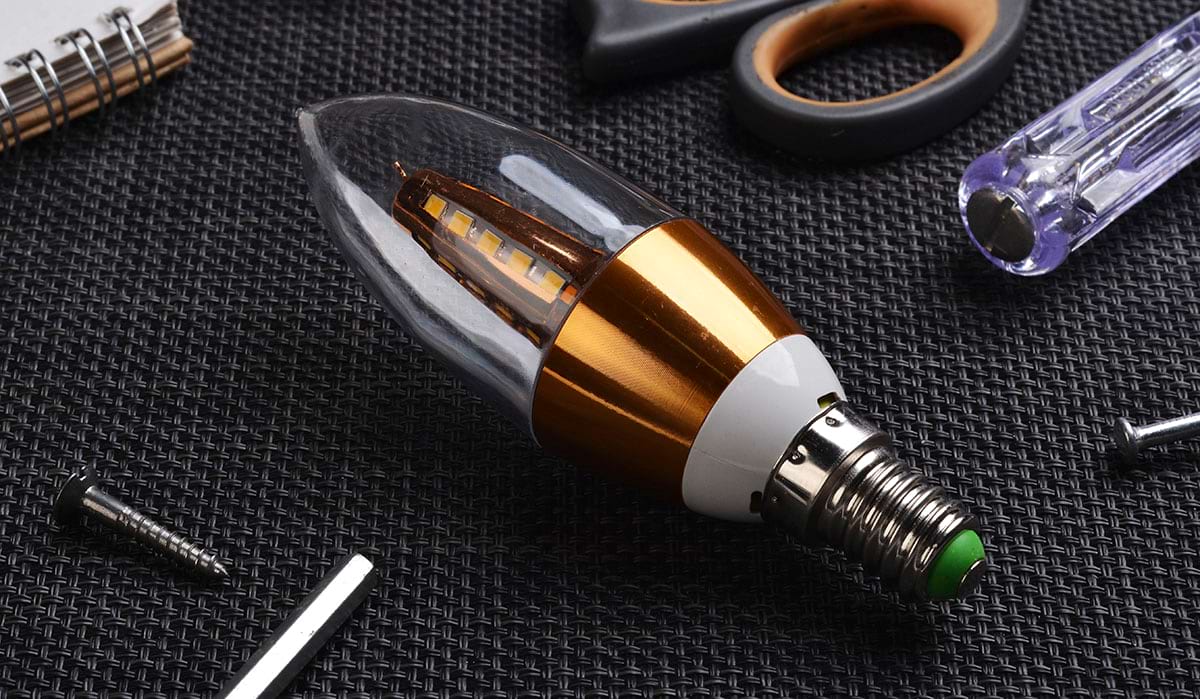10 Benefits of LED Lighting
Since the inception of electric lighting with Sir Humphry Davy’s revolutionary arc lamp, the technology has come a long way, much like how LED bulbs stand out in our era.
Even though the arc lamp’s brightness diminished rapidly, it served as a beacon for future scientists and inventors to build upon and enhance Davy’s accomplishments.
In the present day, four primary types of bulbs exist fluorescent bulbs (both standard and the more prevalent “CFL” or compact fluorescent), incandescent bulbs (including the vintage/decorative “Edison” light bulbs), halogen bulbs, and LED bulbs.
This article will delve into LED bulbs, encompassing an overview of what LEDs are, their applications, the benefits of LED lighting, and factors to consider when buying LEDs. In essence, if you have ever wondered, “Why are LED lights superior to others?” this article will provide the answers.
Understanding LEDs
Light emitting diodes, or LEDs, are a specific category of semiconductors, a technology that allows electrical currents to flow through its components, consequently generating light energy. These diodes are available in an array of forms, materials, and dimensions, offering limitless potential applications.
LEDs: Applications and Uses
As LEDs efficiently convert the majority of their energy into light, they have become the preferred choice for lighting solutions among individuals and organizations. People typically utilize LEDs to illuminate their homes, garages, and businesses, particularly when replacing outdated bulbs. Additionally, consumer products like automobiles and refrigerators are increasingly incorporating LEDs as a unique selling proposition.
In the business world, LEDs are equally well-liked. Typical commercial applications encompass (though not restricted to):
- Roadway illumination
- Lighting for parking lots and garages
- Pathway lights
- Exterior space lighting
- Manufacturing plants
- Workplace environments
The Advantages of LED Lights
1. Safety
One of the primary advantages of LED light bulbs, if not the most significant, is their safety.
Traditional halogen and incandescent bulbs convert the majority of their energy into heat, raising the likelihood of fire risks. Compact fluorescent lights (CFLs) generate roughly half the heat and contain trace amounts of hazardous chemicals, requiring proper disposal.
Conversely, LEDs emit only a quarter of the heat produced by incandescent bulbs and have significantly lower levels of toxic substances compared to CFLs. This means that LED bulbs can be safely discarded along with regular household waste.
Additionally, there was significant concern regarding the possibility of serious or even lethal electrical shocks for those residing in flood-prone areas, as traditional lighting systems demanded high voltage. LED technology necessitates only about one-tenth of the voltage used in earlier systems, reducing the risk of electrocution during emergencies.
Lastly, the negligible amount of UV radiation emitted by LEDs is promptly transformed into white light inside the bulb. Consequently, there are no adverse effects on the eyes or skin due to UV exposure, nor damage to carpets or furnishings, and no artwork deterioration.
2. Energy Efficiency
One of the most frequently highlighted benefits of LED lights is their impressive energy efficiency. LEDs convert eighty to ninety percent of their energy into light, with only a small portion being emitted as heat. This is in stark contrast to traditional lighting options, which generate fifty percent or more of their energy as heat. To illustrate the difference in energy efficiency, we have provided a comparison table below:
Greater energy efficiency not only leads to reduced greenhouse gas emissions but also results in cost savings, such as lower utility bills and decreased repair/maintenance expenses. This holds true regardless of whether the lights are used for extended periods or not.
3. Illumination
As depicted in the table under the “Energy Efficiency” section, LED bulbs have the ability to generate intense illumination while consuming less electricity. It is important to mention that the table compares the overall lumens, not the actual delivered lumens. LEDs excel in producing brighter light, as their emission is directional (180° compared to 360° emissions of their counterparts).
If there is a need for even more powerful lighting in the future, LEDs can be easily modified to provide greater luminosity than what is currently required by homes and businesses. In addition to generating bright light, studies are being conducted to explore whether advancements in LED technology could potentially address Seasonal Affective Disorder (SAD) and other psychological disorders.
4. Lifespan
Energy efficiency plays a significant role in the rated lifespan of light bulbs. The following table presents the average rated lifespan for the four types of bulbs discussed, expressed in both hours and years of use:
A contributing factor to the extended lifespan of LEDs compared to traditional bulbs is their ability to produce light immediately, with no need for a warm-up period. This characteristic enables them to endure rapid cycling, such as when children frequently turn light switches on and off.
5. Versatility
The compact size of semiconductors makes them highly versatile, allowing them to be utilized in various scenarios. They can be applied in diverse instances, such as circuit board signal lights, holiday tree decorations, or even illuminating a whole airport hangar or pathway. LEDs, whether used individually or combined to form bigger lights, serve as the multipurpose tool of the lighting world.
6. Smart features
Among the numerous benefits of LED lights, the most desired in recent times is the unrivaled control they provide over lighting. However, it is essential to acquire particular smart-enabled bulbs to unlock their full potential, after which the possibilities are endless.
For example, certain LEDs enable adjustments ranging from five to 100% of their total light output. Additionally, some LEDs have the capability to alter their color output, as the white light they often emit is actually a blend of various light wavelengths in different colors. The majority of these lights also enhance security and convenience by offering scheduled on-off timings, voice command, and motion control features.
While it’s true that other bulb types can be dimmed, their longevity and efficiency are adversely affected by the level of dimming. In contrast, LED lights experience an increase in lifespan and efficiency when dimmed. The only downside is the need for specific hardware compatible with the technology, but this is a minor concern considering the benefits.
7. Weather tolerance
LEDs simply require electricity to function, unlike conventional lighting options that need to warm up before reaching maximum brightness. Without delving too deep into technicalities, LEDs generate minimal heat, which is beneficial as excessive heat can impair the performance and longevity of a bulb. If you notice flickering LEDs in low temperatures, it is likely due to internal freezing, particularly if you’re using an off-brand or budget-friendly LED bulb.
Regarding LED usage in high temperatures, their overall brightness and lifespan will diminish more rapidly since the internal components are unable to dissipate heat as effectively as in cooler environments. Consequently, this accelerates LED degradation and reduces their performance. However, it is essential to note that traditional light bulbs also exhibit similar behavior.
8. Durability
LEDs, unlike traditional bulbs, do not need filaments or glass, ensuring that their functionality and construction remain unaffected by vibrations, shocks, and external impacts. LED bulbs are less prone to breaking when dropped, as they frequently utilize stronger materials at a reduced cost, with prices consistently decreasing due to increased demand and ongoing technological advancements.
9. Color temperature
In the past, LED bulbs were solely accessible in stark, cool whites, which were unsuitable for studying or unwinding at home. A common misconception persists that this remains true today; however, LED technology has advanced significantly since its inception. It’s important to note that the majority of LED bulbs can be categorized into the following four temperature ranges (measured in Kelvin, though exceptions do exist):
- Extra warm white (1,700-2,700K)
- Warm white (2,700-3,300K)
- Cool white (4,200-4,500K)
- Daylight white (5,500-7,000K)
The specific temperature required for a particular room depends on the room’s function, your individual preferences, and the need to match existing bulbs. To alter the ambiance of a room, it’s advisable to adjust the color temperature of your bulbs accordingly.
10. Color Rendering Index (CRI) ratings
Color Rendering Index (CRI) scores indicate the level of accuracy with which artificial lighting replicates the true appearance of colors in comparison to natural light. The CRI scale ranges from zero to one hundred, with lower values resulting in more faded colors under artificial lighting, while higher values yield more vivid colors in residential or commercial spaces. Fortunately, LED lights typically score highly on the CRI scale (between 65 and 95).
In general, a CRI rating of at least seventy-five is considered satisfactory, as it provides adequate color rendering for most tasks. However, in environments where precise lighting is essential, such as hospital operating rooms, print facilities, and photography studios, a CRI rating of ninety or above is recommended.
Things to watch out for when purchasing LED lights
1. Initial investment is costly
It’s accurate to say that LEDs offer substantial cost savings over time compared to conventional lighting options, but their initial implementation cost is significantly higher, particularly if you’re replacing them all simultaneously rather than as they individually burn out.
Furthermore, while it might be appealing to opt for less expensive LED bulbs, it’s more beneficial in the long run to choose reliable brands like GE or Phillips. Indeed, purchasing from “budget” brands may considerably reduce expenses, but if the bulbs are poorly designed, they will deteriorate more quickly, flicker, alter color, dim, or produce uneven lighting. For the majority, this makes the initial investment well worth it.
2. Repairability
At present, the majority of LED producers develop and build bulbs and corresponding fixtures internally, due to the intricate nature of the entire system. Consequently, if a single element malfunctions, it necessitates the replacement of the entire unit, resulting in significant costs for both consumers and the environment.
Nonetheless, as LED technology advances (which is typical of technology), there will likely be an increased demand for standardization in the field, particularly as upcoming generations place greater emphasis on eco-friendliness and long-term sustainability.
In conclusion: The benefits of LED lighting
Having explored the numerous advantages of LED lights, as well as some potential drawbacks to consider when buying them, you can now confidently choose the appropriate lighting options for your residential or commercial space. Opting for third-generation LED bulbs is an excellent way to future-proof your property. Regardless of which perks appeal to you the most, LED technology is undoubtedly here to stay, offering an outstanding lighting solution that will conserve energy, time, and finances in the long run.






Leave a comment
You must be logged in to post a comment.